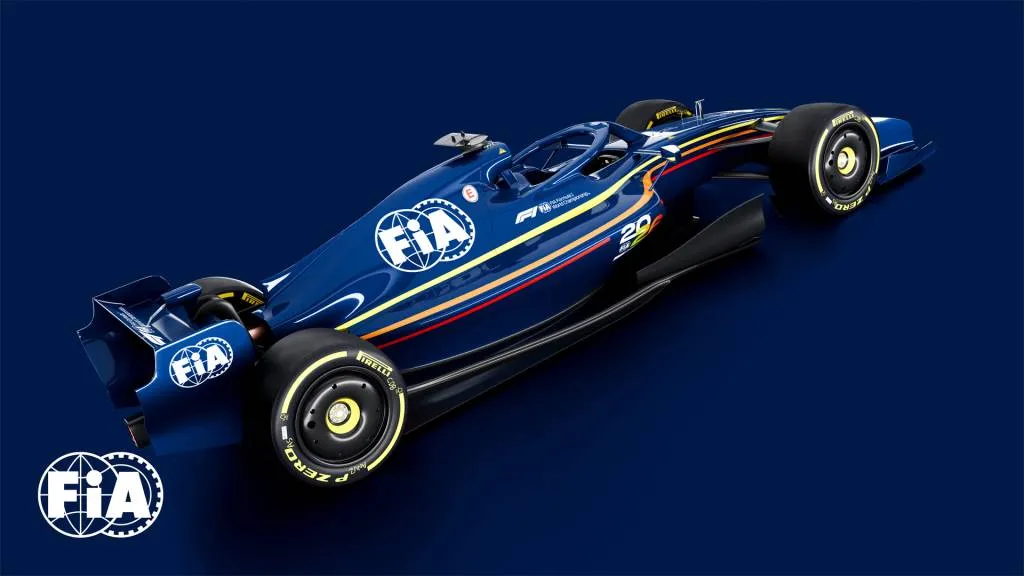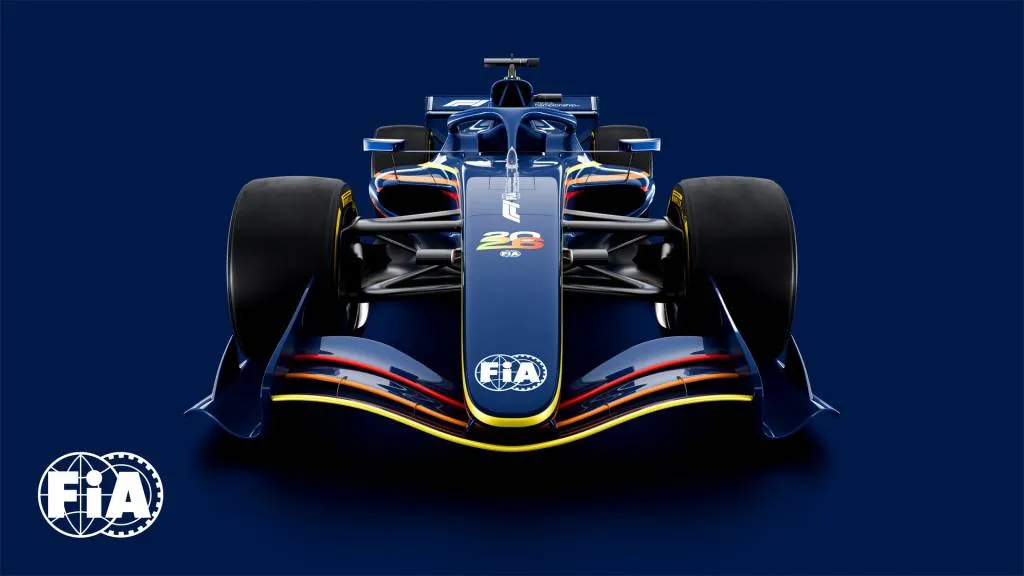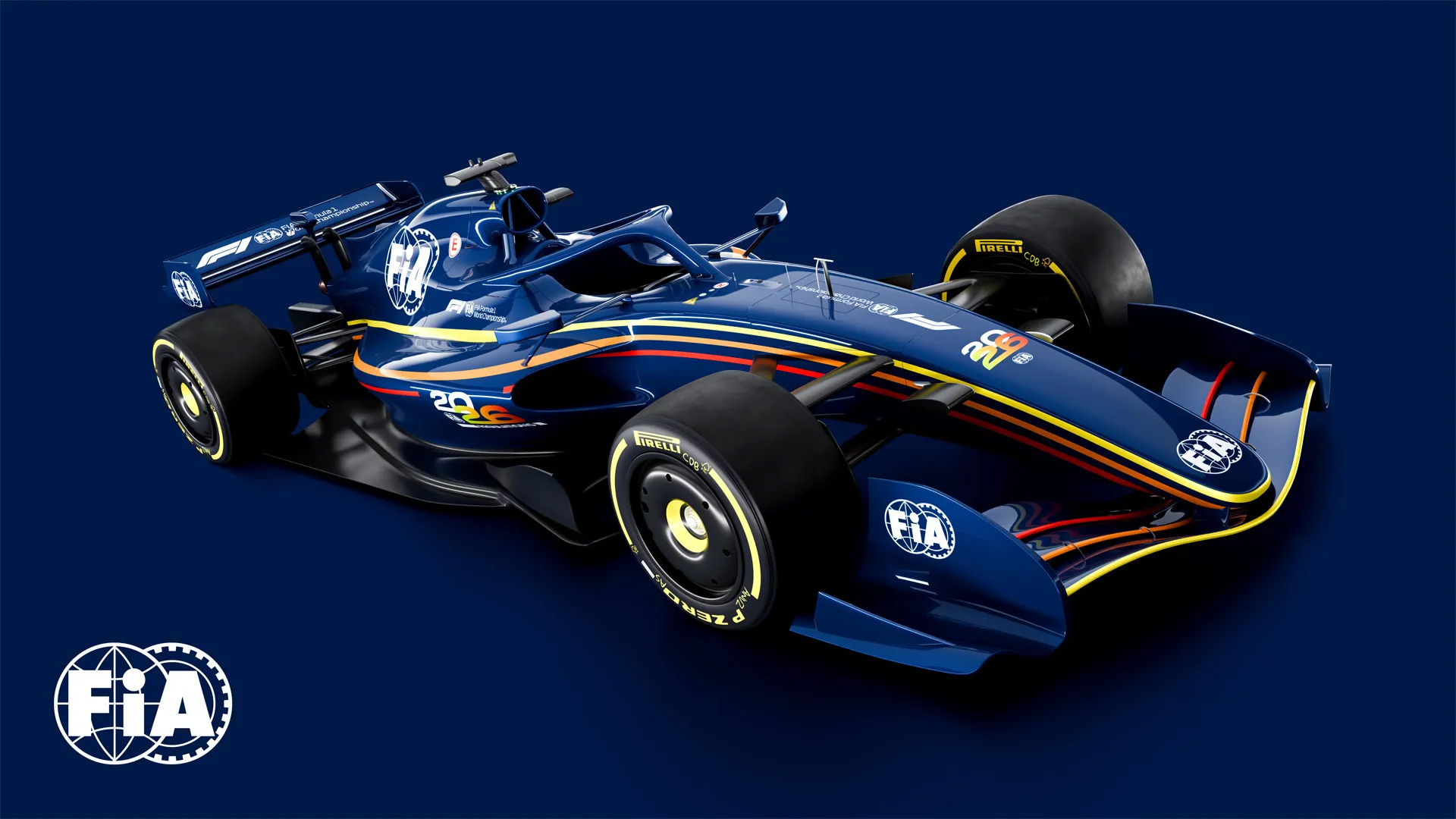Formula 1 is set to enter a new era in 2026 and the FIA, which sanctions the sport, on Thursday provided a first look at the the design rules that will shape the cars.
The key aim for the designers was to enhance sustainability in the sport, but traditional areas like improving the competition and safety haven’t been ignored.
More power, more electrification
In the area of power units, 100% sustainable fuel, possibly even a synthetic e-fuel, will be introduced. The power units themselves will stick with the current turbocharged 1.6-liter V-6 hybrid format, but will be made simpler due to the elimination of the MGU-H, the electric motor-generator which recovers exhaust energy via the turbocharger.
The MGU-K unit, which recovers energy under braking, will remain and deploy more power. The rules call for an increase in electrical power to 469 hp from the current 160 hp. Peak output of the system will still be more than 1,000 hp, though overall fuel usage during a race should drop from about 220 pounds today to 154 pounds in 2026.
One other big change is what the FIA calls a Manual Override mode. This will provide drivers with an on-demand burst of electrical energy they can use when they are close to a car in front to help with overtaking. For a leading car, the energy will taper off after a speed of 180 mph, reaching zero at 220 mph.
The new power unit design has already managed to attract a record number of suppliers. In addition to current suppliers Alpine, Ferrari, and Mercedes-Benz AMG, as well as Red Bull Racing, which is currently using a Honda design, Audi will enter the sport in 2026, both as a power unit supplier and constructor. Honda is also set to return as a power unit supplier, working with Aston Martin, while Red Bull will work with Ford on its own new power unit.
Lighter, nimbler cars
An aspect that will appeal to fans is a smaller car. The wheelbase will drop from a maximum of 3,600 mm to 3,400 mm, while the width will reduce from 2,000 mm to 1,900 mm. The maximum floor width will also reduce by 150 mm. This, the designers say, will result in nimbler cars, and should also help with overtaking, especially on narrow tracks.
The wheels, still 18 inches in diameter, will also become narrower, down 25 mm at the front and 30 mm at the rear, though with only a minimal loss in grip, the FIA said.
The smaller size of the car will result in less weight. The 2026 cars will have a minimum weight of 1,693 pounds, down 66 pounds from the current minimum. The minimum weight figure includes the weight of the driver.

2026 Formula 1 race car design – Photo credit: FIA
New active aerodynamics
The design rules will also shake up the aerodynamics. The cars will feature new active aerodynamic systems consisting of movable front and rear wings, which the FIA said will result in greater cornering speeds. And for the straights, instead of the current Drag Reduction System that can only be deployed at certain sections of the track, the drivers in 2026 will be able to swap to a low-drag configuration called X-Mode anytime they hit a straight.
The front wing, now narrower, will feature a two-element active flap while the rear wing will have a three-element system. The rear wing will also lose the current lower beam wing, and the end plate designs will be simplified. The current front wheel arches will be removed, and new boards at the front of the side pods will help with the control of wheel wake, the FIA said.
The cars will also have a partially flat floor and a lower-powered diffuser, which will reduce the ground effect.
The FIA said the changes will result in 30% less downforce and 55% less drag compared to the current cars.

2026 Formula 1 race car design – Photo credit: FIA
Improved safety
Finally, safety will get a further boost from the already stringent levels. This will mainly be achieved through stronger structures and tougher testing procedures. Key measures will include the introduction of a two-stage crash structure up front instead of the single-stage design currently used to protect the passenger cell from secondary frontal impacts. Roll hoop loads will also be increased in line with other single-seat racing categories, and new rear wing endplate lights will be required.
The 2026 design rules are not yet finalized. The next step will be a vote by the World Motor Sport Council, a separate governing body within the FIA, on June 28.
